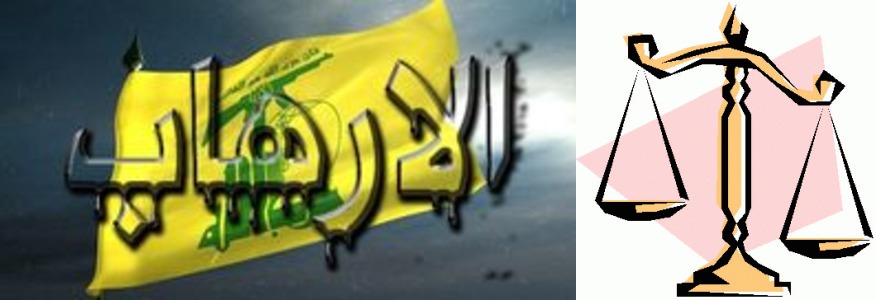The Arab Nation and its Soft Bellies
Eyad Abu Shakra/Asharq Al Awsat/January 31/19
It was announced, a few days, ago that the Israeli Prime Minister Binyamin Netanyahu was about to visit Chad. This announcement almost concurred with the tour made by Iran’s Foreign Minister Javad Zarif in Iraq, and included unprecedented visits to influential communities in a country that has rarely looked as fragmented and fragile as it is now.
These two events bring to mind the overly ambitious ‘Map of the Arab World’ that was published in the media and promoted almost like a logo for firebrand Arab nationalist organizations during the 1970s and 1980s. With this map, I also recall the ‘nationalist’ rhetoric somehow imbued with ethnic chauvinism at the expense of high principles like respect of liberties, diverse views, ‘institutional’ politics, etc.
Those days we were parroting honest and innocent slogans such as “nothing takes precedence over the struggle (for liberation)”. In fact, excessive ‘nationalism’, albeit in the service of uniting various constituent factions in the face of foreign colonialism and mandates, was bound to leave a bitter aversion within minorities who felt forced to accept an ‘imposed’ or – at least – irrelevant identity.
Furthermore, given the fact that there were always certain powers working hard to nurture dissent and division inside the Arab world, aversion continued; but it would rise and fall in tandem with the rise and fall in the nation’s health, and the fortunes of the defenders of ‘Arabism’.
When things were looking up everybody was, of course, happy; while the opposite was true in bad times. During the latter, ethnic, sectarian and religious sensitivities would appear, unleashing secessionist calls and setting in motion campaigns that begin with redefining specificities and culminate in almost inviting foreign interventions with the aim of effecting political change or changing maps.
Before the 1967 Arab defeat, nationalist hope climaxed under the banners of “one Arab nation from the Atlantic to the Gulf”. The defeat, however, buried the big euphoric illusion.
Reactions, of course, were varied.
Some found the defeat an opportunity to settle old political scores. Another group was so desperate that they moved away from politics altogether. A third group began looking for practical alternatives after becoming convinced that the old ‘Arab political order’ was finished; in their quest, they found two opposing routes:
1- The route of ‘the People’s Liberation War’, through the Palestinian ‘Fedayeen’ resistance organizations which were widely accepted until September 1970 as the only viable alternative.
2- The route of the ‘Peace Settlement’ taken by the Egyptian President Anwar Sadat, who believed that since Israel was effectively America’s 51st state, Washington would never let it lose a war; thus, “all cards are in America’s hands”.
‘The People’s Liberation War’ option fell by September 1970 in Jordan, then in Lebanon, and lost its dimensions with the USSR exodus following Sadat’s expulsion of Soviet military advisors. It later became complete after the collapse of the USSR itself under Mikhail Gorbachev and Boris Yeltsin in the early 1990s.
At this juncture, in the absence of the ‘nationalist’ and ‘Leftist’ alternatives, and with the rise of the ‘Religious Right’ in Iran and Israel, and later in Turkey, it was obvious that the winds of the ‘Religious Right’ would affect the Arab world, as well.
In Egypt, ‘Political Islam’ was expected to emerge and flourish as early as Sadat adopted the sobriquet of ‘The Believer President’ and used its mass appeal in his campaign to crush the remnants of ex-President Nasser’s security establishment.
As for the rest of the region, with the demise of the ideological enemies of ‘Political Islam’ (both Sunni and Shiite), the margin was becoming ever smaller for those resisting it; more so, within the Arab political order.
In Iraq and Syria, particularly, the ruling Arab Ba’th Socialist Party -supposedly an ‘Arab nationalist’ and ‘Socialist Leftist’ party – soon lost its leftwing ‘Socialism’ after decades of monopolizing power, and relinquished its ‘Nationalism’ when sectarian and local affinities took over its leadership and security organizations.
Within a short time, the Iran-inspired and backed ‘Shiite Political Islam’ emerged as the main challenge to Baghdad’s regime, and ‘Sunni Political Islam’ as the main opposition to the Damascus regime. Even in Palestine, after years of conflicts and competition between various ‘Nationalist’ and ‘Leftist’ organizations, ‘Political Islam’ represented by Hamas and Islamic Jihad appeared on the scene.
Leaving the Near East, in the ‘Maghreb’ states of North Africa, the Amazigh (Berber) identity acquired a new momentum, which was quite natural, given the decline of Arab ‘Nationalism’ and the radicalization of ‘Political Islam’.
This situation only needed a detonator to take the whole region, which was already suffering economically, environmentally and politically, into the unknown.
This detonator came in the shape of the September 11th, 2001 attacks on the USA. That day, the attacks that targeted New York City, Washington DC, and an area in rural Pennsylvania shook the fragile Middle East; and the first tremor was invading Iraq in 2003, and from then on there was a ‘domino effect’.
The talk of ‘creative chaos’ or ‘organized chaos’ gained more credibility and was soon translated on the ground; as Iran’s expansionism gave rise to the armed ‘Islamist’ extremism, Al Qaeda at first, and later on ISIS.
In 2005, Lebanon’s former Prime Minister Rafic Hariri was assassinated, and as the Syrian troops were pushed to leave Lebanon, Iran assumed control through its Lebanese arm, Hezbollah.
During that period too, the countdown of the secession of South Sudan started (completed by 2011); and from Tunisia to Syria, through Egypt, Libya, Yemen, and … later Sudan, the ‘people sought to bring down the regime’ with mixed results!
Today, we witness an important development as Israel re-establishes strong ties with Chad; as branches from the same tribal groups live across Chad’s borders with Libya and Sudan. Other important regional developments include Iran’s interference even in Iraq’s tribal and ethnic politics; following its meddling in Kurdish affairs and involvement in the democratic change taking place in both Syria and Lebanon.
As for Turkey’s ambitions, they are fueled by its yearning to its former regional imperialist Ottoman influence which once covered the whole of the Arab world and extended westwards to the Algeria-Morocco borders.
So, while others have big projects, the only thing our nation has is very soft bellies!
أمتنا العربية… وخواصرها الرخوة
إياد أبو شقرا/الشرق الأوسط/20 كانون الثاني/19
أُعلن قبل أيام عن زيارة ينوي رئيس الحكومة الإسرائيلية بنيامين نتنياهو، القيام بها إلى تشاد، وترافق هذا الإعلان مع جولة قام بها وزير خارجية إيران محمد جواد ظريف، إلى العراق شملت جولات غير مسبوقة على مكوّنات مؤثرة في نسيجه الداخلي الذي قلما بدا هشاً كما يبدو اليوم.
هنا، أتذكر «خريطة العالم العربي» التي كثر تداولها في عدد من وسائل الإعلام، وغدت شعارات لبعض التنظيمات القومية إبان حقبة السبعينات والثمانينات. ومعها أتذكر بعض الخطاب القومي الذي غلبت عليه النزعة الشوفينية – العرقية على حساب مبادئ راقية كاحترام الحريات العامة، والرأي الآخر، و«دولة المؤسسات»… وغيرها.
في تلك الحقبة، كنا نكرّر شعارات طيبة المقاصد وسليمة الطوية مثل «لا صوت يعلو على صوت المعركة».
المبالغة والإفراط في «القومية» بوجهها العنصري الفئوي، ولو من منطلق جمع الشمل ورص الصفوف ضد الاستعمار والانتداب، كانا لا بد أن يثمرا بحكم المنطق ردة فعل نافرة من أقليات وجدت نفسها غريبة عن هوية مفروضة عليها «من فوق»، أو على الأقل، غير معنية بها.
ولمّا كانت هناك جهات تغذي نوازع التفرقة والتفتيت في عالمنا العربي، منذ عقود سحيقة، استمر النفور… إلا أنه كان يخبو لبعض الوقت ثم يطفو على السطح، بالتوازي مع «الصعود» و«الانحدار» في عافية «الأمة» وأوضاع المنافحين عن «الهوية العربية»…
في مواسم «الصعود» كان الكل مستفيداً، لأن للنصر – كما يقال – مائة أب، بيد أن الحال كان ينعكس في فترات «الانحدار» فتنتعش الحساسيات الفئوية، عرقيةً كانت أم دينية أم مذهبية، وتخرج الدعوات الانفصالية… وتنشط حملات تتراوح بين إعادة تعريف الخصوصيات ولا تنتهي بالاستقواء بقوى خارجية أملاً في تغيير الخرائط وتبديل ميزان القوى.
قبل نكسة 1967، بلغ الأمل القومي الأوجّ تحت خفق بنود وعد «الأمة العربية الواحدة من المحيط إلى الخليج». غير أن تلك النكسة أزالت غشاوة من الوهم كانت تدغدغ المشاعر.
لا شك، تفاوتت ردّات الفعل.
البعض وجد المناسبة سانحة لتصفية الحسابات السياسية، وهذا من حقه. وهناك من استسلم لليأس، وانصرف بفكره وجسده بعيداً تماماً عن السياسة. وثمة فئة ثالثة باشرت البحث عن بدائل عملية لاقتناعها بسقوط ما سمته «النظام السياسي العربي»، وعلى الطريق وجدت خيارين متناقضين:
– فكرة «حرب التحرير الشعبية»، عبر المنظمات الفدائية الفلسطينية التي صارت عند كثيرين حتى سبتمبر (أيلول) 1970 البديل الوحيد.
– التسوية السلمية، كما فعل الرئيس المصري أنور السادات، الذي اعتبر أنه ما دامت إسرائيل هي واقعياً «الولاية الأميركية الـ51»، فإن الولايات المتحدة لن تسمح أبداً بهزيمتها. ومن ثم، فإن أوراق الحل كلها في أيدي واشنطن.
سقوط «حرب التحرير الشعبية»، بدءاً من الأردن، ثم لبنان… اكتملت أبعاده بخروج الاتحاد السوفياتي من معظم المنطقة بعد طرد الرئيس السادات الخبراء السوفيات، ومن ثم انهيار الاتحاد السوفياتي نفسه تحت «إشراف» ميخائيل غورباتشوف وبوريس يلتسين في مطلع عقد التسعينات من القرن الماضي.
عند هذه المحطة، في غياب البديل القومي و«اليساري»، وبالتوازي مع صعود اليمين الديني في إيران وإسرائيل، ثم في تركيا، كان بديهياً أن تهب عواصف مماثلة على العالم العربي.
في مصر، كان متوقعاً خروج مارد «الإسلام السياسي» من قمقمه في مشروع بناء هوية سياسية متميّزة خاصة بعهد السادات، الذي روّج له مناصروه لقب «الرئيس المؤمن»، بعد ضرب بقايا الناصرية الأمنية المسماة «مراكز القوى». وعلى مستوى المنطقة ككل، في غياب القوى العقائدية المقاومة لـ«الإسلام السياسي» بوجهيه الشيعي والسنّي، تقلص كثيراً الهامش أمام مناوئيه… وبالأخص، داخل النظام السياسي العربي.
أكثر من هذا…
في العراق وسوريا، تحديداً، حيث كانت السلطة نظرياً لحزب «قومي» و«يساري» (اشتراكي) فإن حزب البعث العربي الاشتراكي، فقد «يساريته» الاشتراكية بعد عقود من انفراده بالسلطة. وخسر «قوميته» عندما طغت الولاءات المذهبية والمناطقية على قيادته الفعلية، ومؤسساته الأمنية. ولم يطل الوقت، حتى غدا «الإسلام السياسي الشيعي» مصدر تحدٍّ لنظام بغداد – بدعم مباشر من إيران – و«الإسلام السياسي السنّي» مصدر تهديد لحكم دمشق. كذلك في فلسطين، بعد سنوات من التجاذب والتنافس بين تشكيلة متنوعة من التنظيمات «القومية» و«اليسارية»، ظهر «الإسلام السياسي» هنا أيضاً، ممثَّلاً بـ«حماس» و«الجهاد الإسلامي».
بل حتى في دول المغرب، اكتسبت الهوية الأمازيغية زخماً جديداً، وهذا أمر طبيعي، بعد ترهل «العروبة» و«ردكلة» الإسلام!
هذا الوضع ما كان بحاجة إلاّ إلى صاعق تفجير، ليُدخِل المنطقة المأزومة اقتصادياً وبيئياً وسياسياً، كلها في المجهول. وحقاً، تأمَّن هذا الصاعق يوم 11 سبتمبر 2001.
في ذلك اليوم، وفّرت الاعتداءات الإرهابية على نيويورك وواشنطن وريف ولاية بنسلفانيا الذريعة لهزّ البنية الإقليمية الهشة. وكانت الخطوة الأولى غزو العراق عام 2003، ومع الغزو أسقط أول أحجار «الدومينو»، وبعده – كما نعلم – «كرّت» السبحة!
بدأ الكلام يأخذ طابعاً جدياً عن «الفوضى الخلاّقة»، ولم يطل الوقت حتى بوشر بالتنفيذ. وبررّ التمدد الاحتلالي الإيراني ولادة تيارات التطرّف المسلح «القاعدي»… ثم «الداعشي».
عام 2005 اُغتيل رفيق الحريري في لبنان، وانسحبت القوات السورية منه لتتولى أمره إيران عبر «حزب الله». وانطلق العد العكسي لانفصال جنوب السودان (أُنجز عام 2011). ومن تونس إلى سوريا، عبر مصر واليمن… وأخيراً السودان، رُفع شعار «الشعب يريد تغيير النظام»، فتنوعت المعاناة واختلفت النتائج.
عودة إسرائيل إلى تشاد، حيث تعيش عبر الحدود مع ليبيا والسودان مكوّنات قبلية مشتركة مثل التبو (الذي ينتمي إليهم الرئيس إدريس دبّي) والفور… تطوُّر مهمّ.
كذلك مهمٌّ دخول إيران في النسيج العشائري العراقي، كما دخلت من قبل في قلب الحسابات الكردية، وعملية التغيير الديموغرافي في سوريا ولبنان…
ولا ننسى الطموح التركي، المستند إلى حنين لماضٍ من النفوذ الإقليمي الذي غطى المشرق العربي وامتد غرباً حتى الحدود الجزائرية المغربية.
نعم، مشاريع الآخرين كبيرة، وخواصر أمتنا كلها رخوة…




















